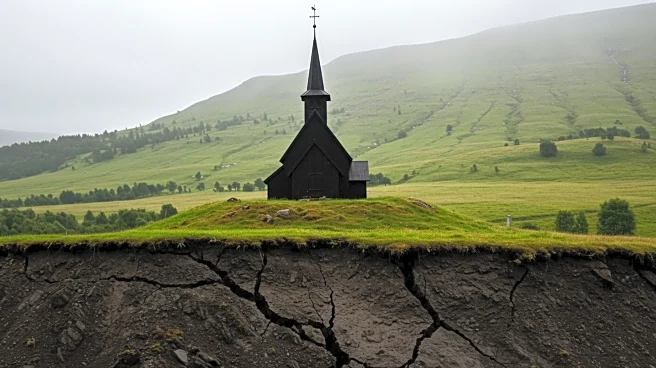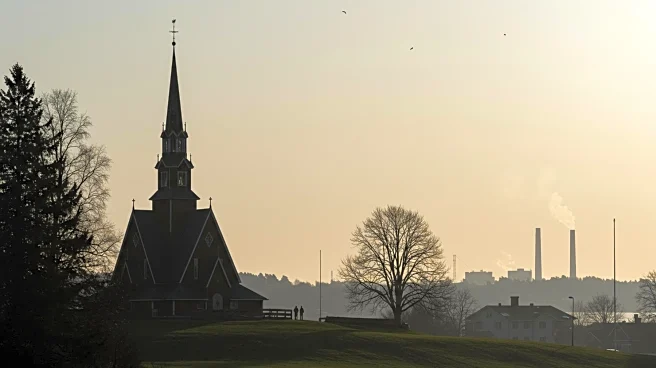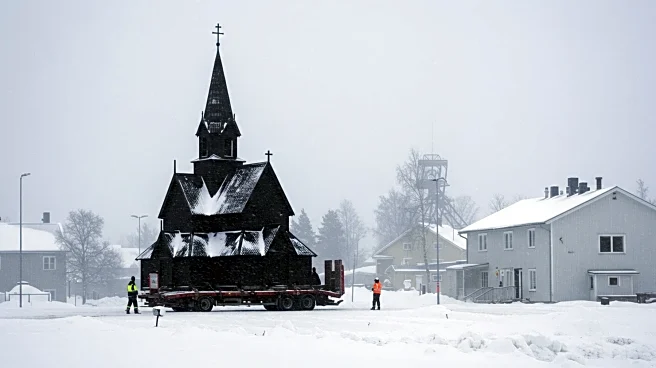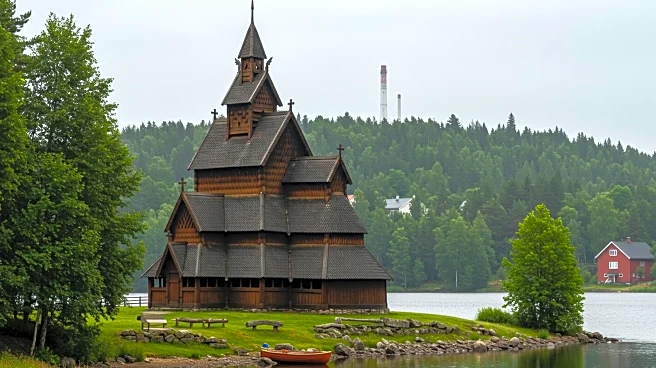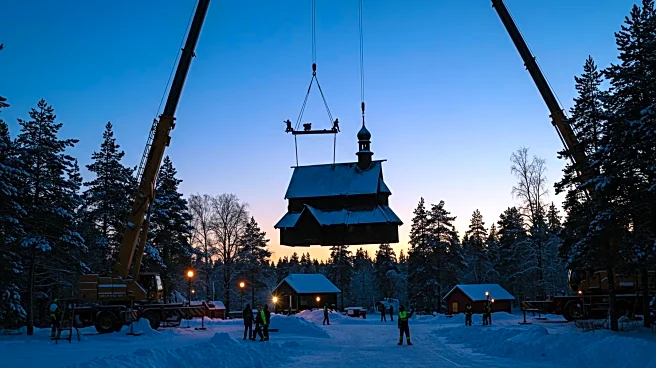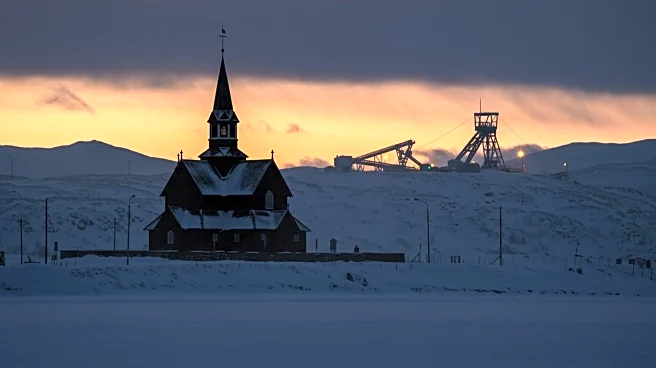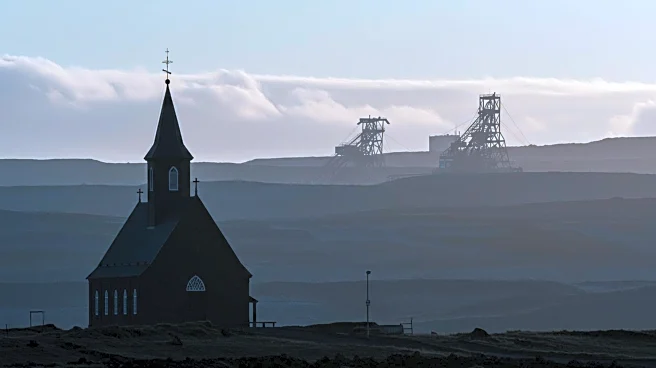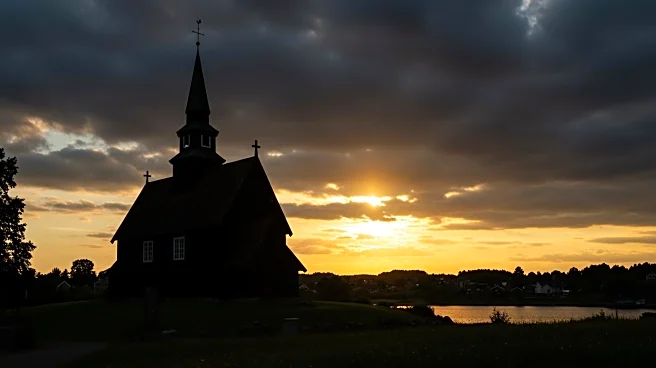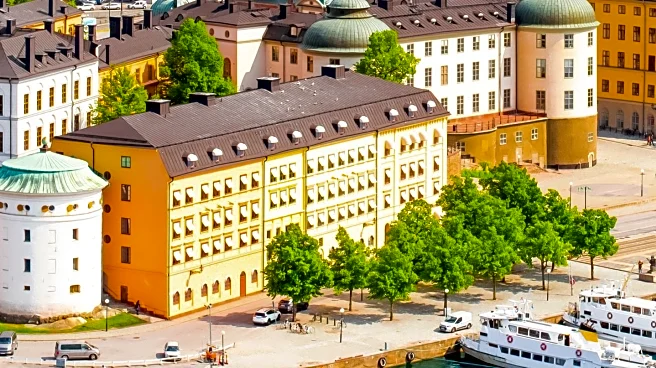What's Happening?
In Kiruna, Sweden, a significant engineering feat has been accomplished with the relocation of the Kiruna Church, a historic building originally constructed in 1912. The church was moved over three miles to a safer location due to ground instability caused by extensive mining activities. The LKAB iron mine, the largest underground iron mine globally, has been operational for over a century, leading to subsidence in the area. The relocation process, funded by LKAB, involved careful engineering to ensure the structural integrity of the church during its move, which took two days to complete. The event attracted large crowds, including Sweden's King Carl XVI Gustaf.
Why It's Important?
The relocation of Kiruna Church highlights the broader impact of industrial activities on local communities and historical sites. The mining operations, while economically beneficial, pose significant risks to infrastructure and necessitate costly interventions. The move underscores the tension between economic development and preservation of cultural heritage. Additionally, the relocation has sparked criticism from local indigenous Sami people, who are concerned about the environmental and cultural impacts of mining, particularly with plans to open a new mine containing rare earth minerals crucial for electronics and green energy.
What's Next?
The church is expected to reopen by the end of 2026, but the relocation is part of a larger plan to move the entire town of Kiruna. This ongoing process will continue to involve significant logistical and financial efforts. The criticism from the Sami community may lead to further discussions on balancing industrial growth with cultural preservation and environmental protection. The new mine's development could face opposition, potentially affecting its timeline and operations.
Beyond the Headlines
The relocation of Kiruna Church raises ethical questions about the responsibility of corporations in mitigating the impacts of their operations on local communities. It also highlights the challenges faced by indigenous populations in preserving their way of life amidst industrial expansion. The situation in Kiruna could serve as a case study for other regions facing similar dilemmas, prompting discussions on sustainable development and corporate accountability.
